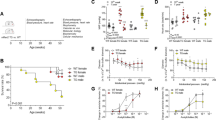Abstract
Aim of this study was to assess the effect of propionyl-L-carnitine (PLC), a naturally occurring derivative of L-carnitine, in cardiac hypertrophy induced by pressure overload in rats. The abdominal aorta was banded and the rats received one daily administration of PLC (50 mg/kg) or saline for four days. The hearts were excised 24 h after the last administration and were perfused retrogradely with oxygenated Krebs-Henseleit buffer containing 1.2 mM palmitate bound to 3% (w/v) albumin, 2.5 μM PLC and 25 μM L-carnitine. A saline-filled balloon was inserted into the left ventricle and the heart contractility was measured at three volumes of the balloon, corresponding to zero diastolic pressure and to increased volumes (110 and 220 μl) over the zero volume. At the end of the perfusion, the hearts were freeze-clamped, weighed and analyzed for adenine nucleotide and phosphocreatine (PCr) content by HPLC methods. No differences in the myocardial performance were found at zero diastolic pressure. In contrast, at high intraventricular volume, the maximal rate of ventricular relaxation was increased in PLC-treated with respect to saline-treated controls (p < 0.05). In addition, the increase of the end-diastolic pressure at increasing balloon volume was more marked in controls than in the PLC-treated hearts (p < 0.02). These data correlate well with the measured higher level of total adenine nucleotides (p < 0.05) and ATP (p < 0.02) in the PLC-treated hearts, while PCr was the same in both groups. Parallel experiments performed in the absence of palmitate in the perfusing media failed to show any effect of PLC. We conclude that PLC improves the diastolic function by increasing the fraction of energy available from fatty acid oxidation in the form of ATP.
Similar content being viewed by others
References
Bremer J: Carnitine: metabolism and function. Physiol Rev 63: 1420–1480, 1983
Bieber LL: Carnitine. Ann Rev Biochem 57: 261–283, 1988
Regitz V, Shug AL, Fleck E: Defective myocardial carnitine metabolism in congestive heart failure secondary to dilated cardiomyopathy and to coronary, hypertensive and valvular heart disease. Am J Cardiol 65: 755–760, 1990
Bressler R, Gay R, Copeland JG, Bahl JJ, Bedotto J, Goldman S: Chronic inhibition of fatty acid oxidation: new model of diastolic dysfunction. Life Sci 44: 1897–1906, 1989
Spagnoli LG, Corsi M, Villaschi S, Palmieri G, Maccari F: Myocardial carnitine deficiency in acute myocardial infarction. Lancet i: 1419–1420, 1982
Suzuki Y, Masamura Y, Kobayashi Y, Yamazaki N, Harada Y, OsawA M: Myocardial carnitine deficiency in chronic heart failure. Lancet i: 116, 1982
Editorials: Carnitine deficiency. Lancet 335: 631–633, 1990
Corr PB, Saffitz JE, Sobel BE: Lysophospholipids, long-chain acylcarnitines and membrane dysfunction in the ischemic heart. Basic Res Cardiol 82, Suppl 1: 235–243, 1987
Corr PB, Creer MH, Yamada KA, Saffitz JE, Sobel BE: Prophylaxis of early ventricular fibrillation by inhibition of acylcarnitine accumulation. J Clin Invest 83: 927–936, 1989
Paulson DJ, Traxler J, Schmidt M, Noonan J, Shug AL: Protection of the ischaemic myocardium by L-propionylcarnitine: effects on the recovery of cardiac output after ischaemia and reper fusion, carnitine transport, and fatty acid oxidation. Cardiovasc Res 20: 536–541, 1986
Davis EJ, Spyderold O, Bremer J: Pyruvate carboxylase and propionyl-L-CoA carboxylase as anaplerotic enzymes in skeletal muscle mitochondria. Eur J Biochem 110: 255–262, 1980
Liedtke AJ, De Maison L, Nellis SH: Effects of propionyl-L-carnitine on mechanical recovery during reflow in intact hearts. Am J Physiol 255: H169-H176, 1988
Ferrari R, Ceconi C, Curello S, Pasini E: Protective effect of propionyl-L-carnitine against ischaemia and reperfusion damage. Mol Cell Biochem 88: 161–168, 1989
Pasini E, Ceconi C, Curello S, Cargnoni A, Ferrari R: Effect of acute and chronic treatment with propionyl-L-carnitine on mechanical performance of isolated heart. J Mol Cell Cardiol 22: S113, 1990
Reibel DK, Uboh CE, Kent RL: Altered coenzyme A and carnitine metabolism in pressure-overload hypertrophied hearts. Am J Physiol 244: H839-H843, 1983
Yang XP, English E, Micheletti R, Benatti P, Rossi R, Giacalone G, Bianchi G: Effect of propionyl-L-carnitine (PLC) on cardiac performance in awake WKY rats with cardiac hypertrophy (Abstr). FASEB J 5: A712, 1991
Van Beek JHGM, Bouma P, Westerhof N: Coronary resistance increase by nondefatted albumin in saline-perfused rabbit hearts. Am J Physiol 259: H1606-H1608, 1990
Ascuitto RJ, Ascuitto NT, Chen V, Downing SE: Ventricular function and fatty acid metabolism in neonatal piglet heart. Am J Physiol 256: H9-H15, 1989
Kagaya Y, Kanno Y, Takeyama D, Ishide N, Maruyama Y, Takahashi T, Ido T, Takishima T: Effects of long-term pressure overload on regional myocardial glucose and free fatty acid up take in rats. A quantitative autoradiographic study. Circulation 81: 1353–1361, 1990
Litwin SE, Raya TE, Gay RE, Bedotto JB, Bahl JJ, Anderson PG, Goldman S, Bressler R: Chronic inhibition of fatty acid oxidation: new model of diastolic dysfunction. Am J Physiol 258: H51-H56, 1990
Grossman W: Diastolic dysfunction and congestive heart failure. Circulation 81 (suppl III): III-1, 1990
Katz AM: Cardiomyopathy of overload: a major determinant of prognosis in congestive heart failure. New Engl J Med 322: 100–110, 1990
Braunwald E: Pathophysiology of heart failure. In: E Braunwald (ed.) Heart Disease. Saunders, Philadelphia, 1988, pp 426–448
Tanonaka K, Sanbe A, Takeo S: Myocardial energy metabolism of pressure-overloaded ratsin vivo state. J Molec Cell Cardiol 23: S31-S32, 1991
Bittl JA, Balshi A, Ingwall JS: Contractile failure and highenergy phosphate turnover during hypoxia: 31P-NMR surface coil studies in living rat. Cite Res 60: 871–878, 1987
Author information
Authors and Affiliations
Rights and permissions
About this article
Cite this article
Motterlini, R., Samaja, M., Tarantola, M. et al. Functional and metabolic effects of propionyl-L-carnitine in the isolated perfused hypertrophied rat heart. Mol Cell Biochem 116, 139–145 (1992). https://doi.org/10.1007/BF01270581
Issue Date:
DOI: https://doi.org/10.1007/BF01270581




